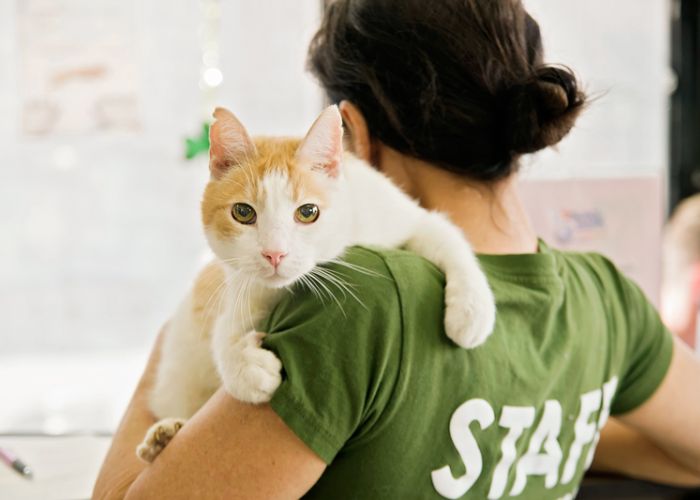Follow the money
Rescue groups can’t afford to ignore financial management best practices

A few months after she was elected president of a feline spay/neuter nonprofit, Jane Smith sensed that something wasn’t right.
Smith, whose name has been changed to protect the organization’s privacy, came into a group whose board members had been serving for a decade or more. They were feeling burned out and were eager to pass the torch to new leaders. Smith had recently started helping out at the monthly spay/neuter clinics and wanted to keep the good work going.
One of her first challenges was figuring out the group’s financial situation. No one had a recent balance sheet, and the organization’s treasurer kept finding reasons for not sharing bank statements and other financial records. At first, Smith assumed the treasurer was just overwhelmed and disorganized. In time, she began to suspect something more sinister.
A trip to the bank confirmed her worst fears.
A reserve fund, intended to pay for future veterinary equipment, had been nearly wiped out. A look at checking account records revealed that the treasurer had also been using the organization’s operating funds for personal expenses.
Altogether, Smith calculated that the woman had stolen at least $38,000. It was a heavy loss for an all-volunteer organization with an annual budget of less than $20,000, and like most small charities, the group didn’t have crime insurance.
Longtime board members and volunteers felt blindsided and betrayed; they had never doubted their treasurer’s dedication to the organization, and many had considered her a close friend. “I never, ever suspected,” they told Smith.
But the warning signs had been there. Smith later learned the treasurer had long since stopped bringing financial statements to board meetings. “Her printer broke; her computer broke; she didn’t have any paper”—there was always some excuse, she says.
This wasn’t a sophisticated embezzlement scheme with the theft hidden behind layers of legitimate-seeming transactions. Bank statements showed payments for makeup, plane tickets and home utility bills. The theft had been going on for years, in plain sight. The problem was that no one was looking.
“It’s the financial engine that maximizes your ability to help as many animals as possible.”
—Caryn Ginsberg, nonprofit consultant
Other people's money
Unfortunately, as Smith and her fellow cat advocates learned, a worthy cause isn’t protection against financial misdeeds.
Nonprofits of all stripes—from churches and Scout groups to volunteer rescue squads and youth sports leagues—have been victims of embezzlement. In the animal welfare arena, some recent examples include a private shelter in New York; breed rescue groups for beagles, spaniels and Australian cattle dogs; a horse sanctuary; and a nonprofit providing care for the pets of people with terminal illnesses. In most cases, the perpetrator was an organization founder, president, treasurer or other key leader, and it took years for someone to discover the theft.
Viewed from the outside, embezzlement can look like a simple case of misplaced trust, but it often points to underlying problems in an organization’s financial management practices.
“It’s very common for nonprofits to start with passion and emotion but not as a business,” says Michael Batts, a certified public accountant and author of Nonprofit Financial Oversight.
In such an environment, basic financial safeguards can easily become a low priority, especially when board members also serve as key volunteers. “The things that feel more like minutiae get put on hold,” explains Jim Tedford, president and CEO of the Association for Animal Welfare Advancement (formerly the Society of Animal Welfare Administrators).
Tedford likens financial management to liability insurance: People often don’t realize its value until something goes wrong.
Embezzlement is a particularly jarring form of wakeup call, but it’s not the only way that a lax approach to finances can harm an organization’s reputation and its ability to fulfill its mission.
If a rescue group consistently spends more than it brings in, it could eventually be forced to shut down. Service providers, such as veterinarians, may cut ties with groups that don’t pay their bills on time. Using grant funds for something other than the stated purpose can put a group in legal jeopardy. And if an organization isn’t properly maintaining financial records, chances are that it is also failing to file tax returns and other required documents, which can result in the loss of tax-exempt status and the ability to solicit donations.
Tedford admits that when he first started working at an animal shelter, he could barely balance his own checkbook. He quickly recognized his shortcomings and signed up for a few accounting and business courses. Financial management doesn’t have to be complex or intimidating, he says, and there are a wealth of publications, webinars and workshops to help nonprofit leaders learn the basics.
Because at the end of the day, nonprofits are in fact businesses, and they have a serious responsibility. “As long as we’re out soliciting contributions,” says Tedford, “we have a real obligation to those donors to be as careful and respectful of that money as if it were our own.”
“We have a real obligation ... to be as careful and respectful of [donors’] money as if it were our own.”
—Jim Tedford, Association for Animal Welfare Advancement
Covering your assets
Sound financial management starts with standard operating procedures—written policies that dictate how your group’s finances are handled.
“Just like you have SOPs for your foster care program or adoptions, you need SOPs for financial management and oversight,” says Tedford.
Basically, your policies should spell out the processes for financial transactions and record-keeping, including internal controls and a system for oversight, along with other aspects of maintaining a sound financial structure, such as budgeting, handling potential conflicts of interest and maintaining a reserve fund.
For small rescue groups, some of this may seem like overkill, but keep in mind that as your organization grows, its finances and regulatory requirements will become more complex. The processes you put in place when things are relatively simple will help you meet those future challenges.
When it comes to crafting your SOPs, there’s no need to reinvent the wheel: Tedford recommends that nonprofits simply borrow the policies of similar organizations and customize them to fit their needs.
For example, most groups will need a policy for collecting, recording and depositing donations. If these involve “live funds,” such as cash donations at a fundraising event, your process should call for dual control, meaning at least two people count and record the money, Batts says. And as much as possible, you should follow the “separation of duties” principle, which essentially means that review and verification functions shouldn’t be performed by the same people who handle the money.
“What you see a lot of times in small organizations is one person collecting money, making deposits and keeping the books,” says Batts. “It’s a classic scenario for embezzlement.”
Investing all financial and legal responsibilities in one person also makes your organization vulnerable if the person abruptly quits or suffers a personal crisis that affects their performance.
That was the situation facing Pets Alive, a rescue organization in Middletown, New York, after the death of its founder in 2007. Afflicted with brain cancer during the last year of her life, the founder had stopped depositing checks, paying bills or filing paperwork. It took years for the organization to recover, says Missy Johnson, a finance professional who became Pets Alive’s treasurer in 2015.
“What you see a lot of times in small organizations is one person collecting money, making deposits and keeping the books. It’s a classic scenario for embezzlement.”
—Michael Batts, CPA
Duty of care
Caryn Ginsberg, co-founder of Priority Ventures Group, has spent more than two decades as a consultant for various animal protection organizations, and she’s witnessed the “whole gamut” of financial management problems. Many people join nonprofit boards without a high degree of financial literacy and an aversion to dealing with budgets and balance sheets, she says. Others are simply unaware that as board members, they have a legal “duty of care” to the organization that includes proper stewardship of its funds.
Board education is a vital step toward ensuring adequate financial oversight, says Ginsberg, and a nonprofit’s policies and practices should reflect that “everyone is responsible for where [the money] goes.”
Board members should review monthly financial statements—typically, a statement of financial position (balance sheet) and a statement of activities and changes in net assets—and compare them to the budget. They also need to be aware of their related fiduciary duties, which include ensuring that insurance coverage is adequate and that IRS, state and other regulatory requirements are met.
To help board members fulfill their duties, Batts recommends providing financial reports in plain language. Johnson adds that the more familiar board members are with the group’s typical daily financial transactions, the better they’ll be able to provide oversight. She encourages board members to “learn from the ground up where the money is flowing.”
It can also be helpful to recruit a business professional to serve on your board and lead a finance committee, Tedford says, or to look for qualified people in your community to provide free advice on an as-needed basis.
In addition to board oversight, an annual independent audit is a best practice (and often required by state law for nonprofits whose annual revenues exceed a certain threshold), and it can show your supporters that you take financial management seriously. “It’s really important to have that independent, objective look,” Tedford says.
If an audit is unaffordable, one solution is to enlist a professional to volunteer time to review your books—or “even just read through a ledger of vendors and expenses,” Ginsberg says.
Tedford agrees that it “doesn’t have to be a full-blown audit” (unless required by your state), but cautions against skimping too much on a vital part of ensuring financial integrity. Coming up with the funds to pay for an audit is a lot easier than dealing with a case of embezzlement, he says, adding that “even the illusion of [financial] impropriety is impropriety in the minds of your donors.”
Learn what your group’s typical expenses and vendors are so you can quickly spot anything unusual.
Recovering balance
It’s been four years since the cat spay/neuter group was rocked by the discovery of its treasurer’s theft and her subsequent conviction on three counts of embezzlement.
The group has persevered, providing free spay/neuter and other medical care for more than 600 community cats a year.
But the recovery wasn’t easy. The group lost its 501(c)(3) status because the former treasurer didn’t file the proper forms, says Smith; it took several months for the organization to regain its public charity status.
In some ways, the organization was lucky. The former treasurer had stopped paying premiums for liability insurance, and no one knew because “she was the one who got all the paperwork,” says Smith. Fortunately, there were no accidents during the years they operated without insurance.
The new treasurer has an accounting background but doesn’t volunteer at the group’s spay/neuter clinics, and Smith prefers having that degree of separation.
Reviewing financial statements is now part of every monthly board meeting. Smith looks over checking account statements regularly, and since she knows all the group’s vendors and normal expenses, she can quickly spot anything unusual. “I don’t trust anyone 100 percent when it comes to money,” she says. “I trust them 99 percent, but I still check.”
And once a year, a bookkeeper who has no affiliation with the organization volunteers her time to audit the books.
The group’s finances are fairly simple, but staying on top of things does take time. Smith admits that she can be “a little anal about the money,” but no one begrudges her carefulness. They learned a hard lesson, and it’s taken time to regain their donors’ and volunteers’ trust.
So at the end of each spay/neuter clinic, Smith counts the money in the donation jar that sits at the table where people check in cats. Another board member watches and counts behind her, and they both sign a receipt for the total.
“I trust myself,” Smith says, “but I still want everybody to know that we’re on the up and up.”
The information in this article is provided for general informational and educational purposes only and is not intended to be legal advice. This article should not be used as a substitute for competent legal advice from a licensed professional attorney in your jurisdiction.







